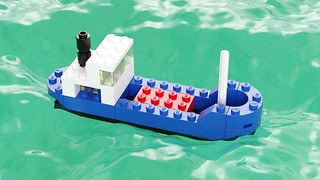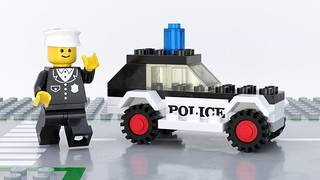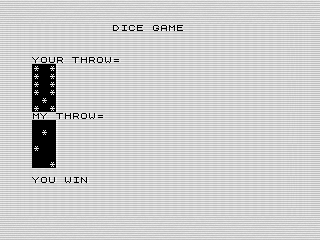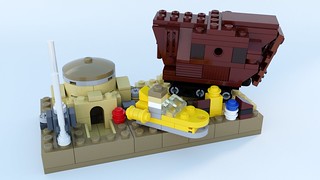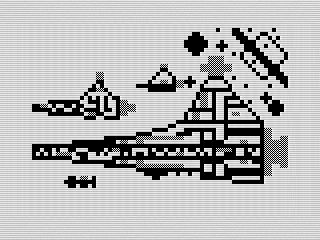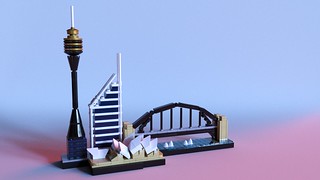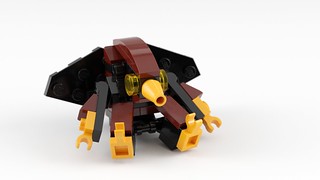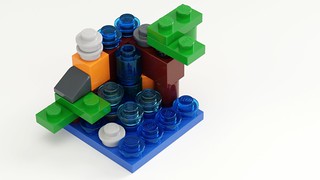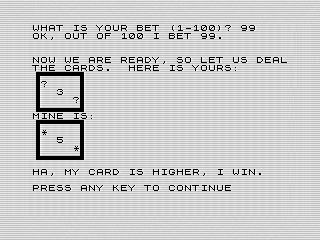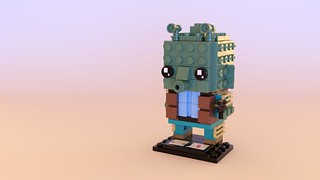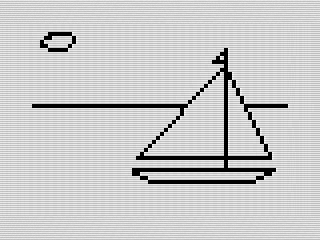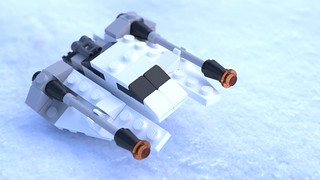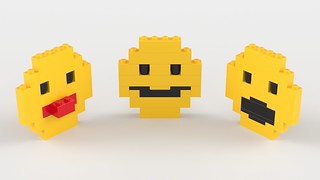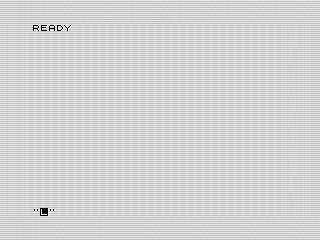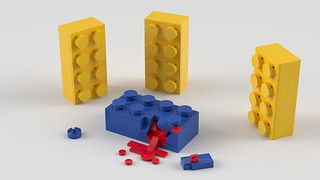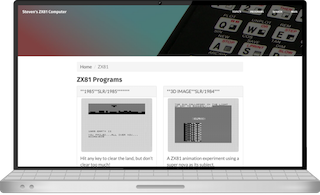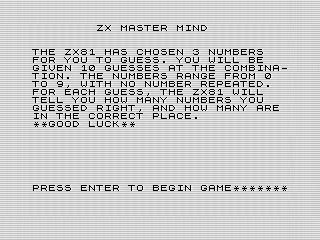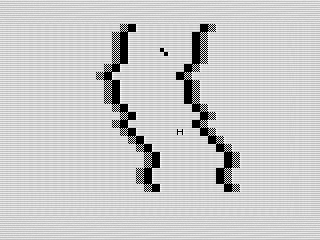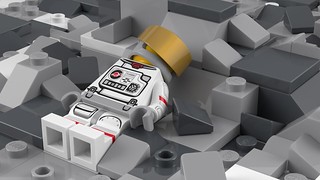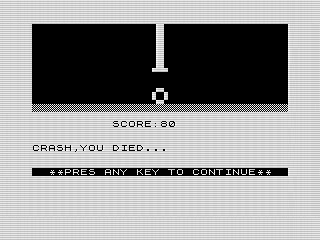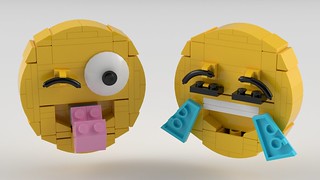I saw a great Pirate Ship render yesterday by saabfan. The water in it impressed me, and I had commented that I didn’t know how to model it in Blender. Scrubs informed that it was easy, providing me the how. Off I went to try for myself.
Bringing an Old ZX81 Sketch to Life with BASIC Is Absolutely Crazy
Foreign to many developers today, I have a notepad and binder full of ideas from my ZX81 days. The notepad contains early program snippets. In contrast, I have sketches and designs crammed into a binder. Flipping through it, I landed on a Star Wars sketch that became the basis for this month’s program.
I love my LEGO images—how I made them better with Mecabricks
Yep, I did it. I purchased a template to render LEGO bricks. Given the many years spent developing my own, I never thought I’d say that. To be fair, it was about time. Mecabricks creator Nicolas Jarraud (aka Scrubs) developed a great product. Below are my first two renders and the results, as expected, are fantastic.
Having Fun With Change, Logs That Is
Last year, I ran across a nifty web changelog service. Although more than I needed, I liked the simple look for tracking changes. Looking for an opportunity to learn Bootstrap, I added it to my test site. Now that I’m including more features on my main blog, I thought I’d add a changelog here as well.
Start the Year with LEGO Emoji, How I Lost and Gained Motivation
It feels like 2017 is just kicking off, yet here we are at the end of January. Time sure seems to be getting away from me lately. I blame the the heater skelter of the holidays and uncomfortable weather. Well, and taking a not so great vacation didn’t improve my mood any. I got sick and all else fell to the side. Today is my opportunity to change that. Today is for LEGO!
Can you hack the computer and save the world?
“Agent 51, your goal is within reach, but there is a problem.” “Understand,” you reply. Professional as always, you only allow a hint of annoyance in your voice. “Explain.” “Well, the plans are in the room in front of you, but the floor is a trap. You need to deactivate it using the terminal to your right.” You look down at the screen, a singular “READY” stares back at you. “Sounds easy enough,” you reply. “It isn’t. The interface is protected and, sadly, our operative died before he could tell us the code.” “So what do I do?” “You’re going to have to hack it. Our operative left a back door into the system, if you can find it. You can do it, Agent 51.” You nod at the voice in your ear. You can do this. Play begins with imagination. Computers are great for role playing and Code IV was one of my programs that helped enable a story. As a kid, I often augmented my play using my ZX81. Although the narrative above isn’t exact, it embodies what I was thinking when I wrote this month’s ZX81 program. Fun, adventurous, and unfair, can you crack the code and disable the floor?
How To Make And Break Big Bricks Using Little Ones
At the end of November, during some time off from work, I dabbled rendering a series of LEGO models I call Big Bricks. Starting out as a “can I do this?” effort, led to me building variations on that theme. To my surprise, the journey culminated with the blogging of Crime Scene on the Brothers Brick.
Can you guess the right code to win?
I used to play Mastermind when I was a kid, a simple code breaking game. One player would set up a sequence of colored pegs and the other would have to guess it in a set number of turns. My version, called ZX Master Mind, has the computer creating the code. Can you guess the three numbers in sequence before your ten turns run out?
Can You Avoid Death in the ZX81 Game Stick Shift?
Dodging games were the rage back in the early ’80s. Wanting to add my own take on the genre, I created Stick Shift, November’s program of the month. The goal is simple. Dodge other cars, oil spills and spikes while not crashing into the wall. Mess up? Well, it’s game over for you. Don’t fret though, it isn't that hard—yet.
Lost on the Moon
Inspiration flows from various sources. For some time I’ve wanted to create a messy model, one with greebles and imperfections. A space article about a moon—I don’t remember which—provided the push I needed. With Frank Sinatra’s In Other Words playing in my head, I headed over to Mecabricks and started building.
Bugers Will Kill You in October's ZX81 Program of the Month
While working to improve the way I display my ZX81 programs, I ran across one that didn’t have a picture. Finding that odd, I did some research and found that I’d written a page for it back in 1999. To my surprise, I’d never uploaded it. To rectify that oversight, I made Bugers this month’s program.
